Our brains have a unique way of processing information. You, as a master marketer, can use the mind’s proclivities to your advantage when it comes to pricing strategies for your offers.
You’ve probably noticed that many marketers end their prices with 7 or 9.
This isn’t a trend or a random choice – it’s a strategy that’s based on profound science and psychology.
Our brains have a peculiar way of perceiving numbers.
For instance, $9.99 seems significantly CHEAPER than $10, and $999 appears more appealing than $1,000.
Even gas stations price their fuel at nine-tenths of a cent, despite it making virtually no difference to your wallet. But to our brains, that fraction of a cent holds some weight.
You might already know about the psychology of the number 9 in pricing, but it’s the number 7 that truly captivates us.
Our curiosity is grounded in scientific and psychological principles.
One Tweak, 15% Sales Boost
Marlene Jensen, author of “Setting Profitable Prices,” delved into the world of pricing during her Ph.D. studies in economic behaviorism.
She conducted numerous price tests using an array of numbers such as $19.99, $19.98, $19.97, and so on.
What she uncovered was nothing short of astonishing.
The price that ended at $19.97 outperformed other pricepoints, resulsting in a staggering 15% increase of sales compared to $19.93.
Let’s take a quick look at what a 15% increase in sales could mean for a $19.97 offer.
Let’s say you normally sell 100 units a day at $19.93. That’s a total of $1,993 in sales. Per day. Not bad!
Now, let’s increase that 15%. Instead of 100 units a day at $19.93, you’re selling 115 units a day at $19.97. That’s $2,296.55.
You’ve just increased your sales by over $300.
I hear what you’re thinking.
Pfft. $300 is nothing.
But imagine this at scale. What if you were able to increase sales of $2,000 offer by 15%?
A mere 4-cent difference led to a remarkable increase in sales.
It wasn’t about the literal 4 cents; it was about how our brains perceive numbers in that crucial moment of decision-making.
The Effect of Odd Numbers
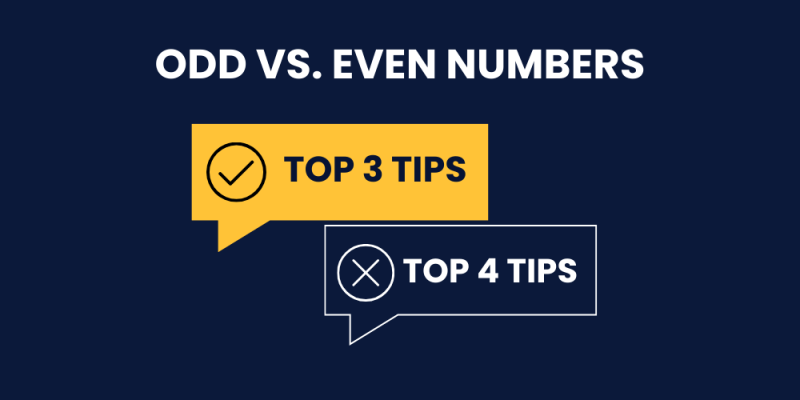
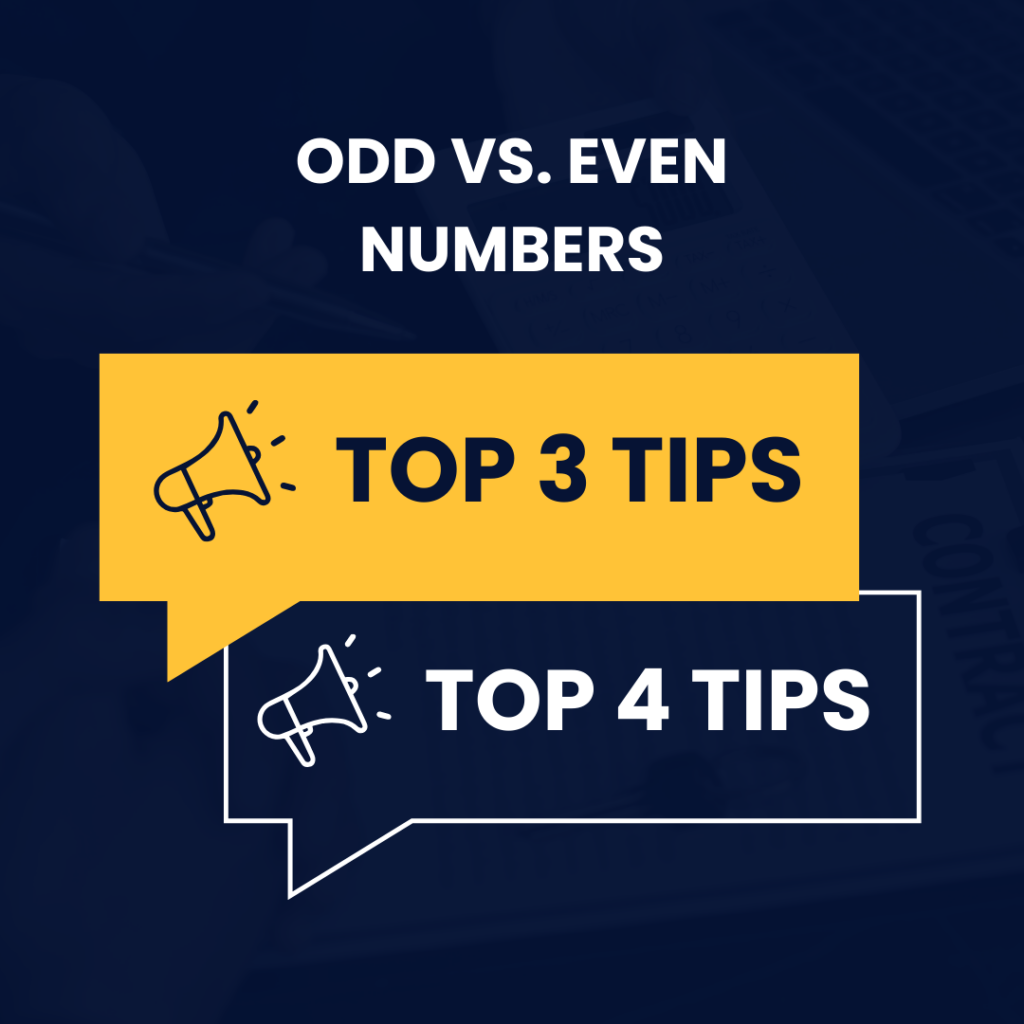
Beyond the idea of 7 being a lucky number, there’s a broader psychological principle at play: the preference for odd numbers over even ones.
Odd numbers tend to be more memorable than even ones. When presented with a list, such as 3 tips or 5 strategies, people are more likely to recall odd-numbered items.
This memorability can work to your advantage in marketing and pricing, as customers are more likely to remember and consider offers with odd price points.
Lists and groupings that feature three or five items are particularly effective. The brain finds these numbers aesthetically pleasing and easy to process.
This is why you often see articles, advertisements, and product bundles presented in groups of three or five.
For example, a pricing tier might include three options: Basic, Standard, and Premium.
Each option has a different price and a different set of features or benefits that the customer can access.
The Basic option is the cheapest and has the fewest features, while the Premium option is the most expensive and has the most features. The Standard option is somewhere in between, offering a balance of price and value.
The idea behind this pricing strategy is to appeal to different segments of customers who have different needs, preferences, and budgets.
Leveraging 7 and 9 in Your Pricing Strategy
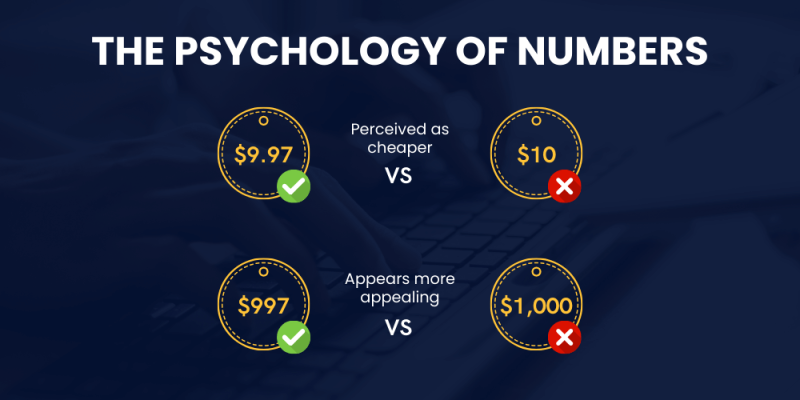
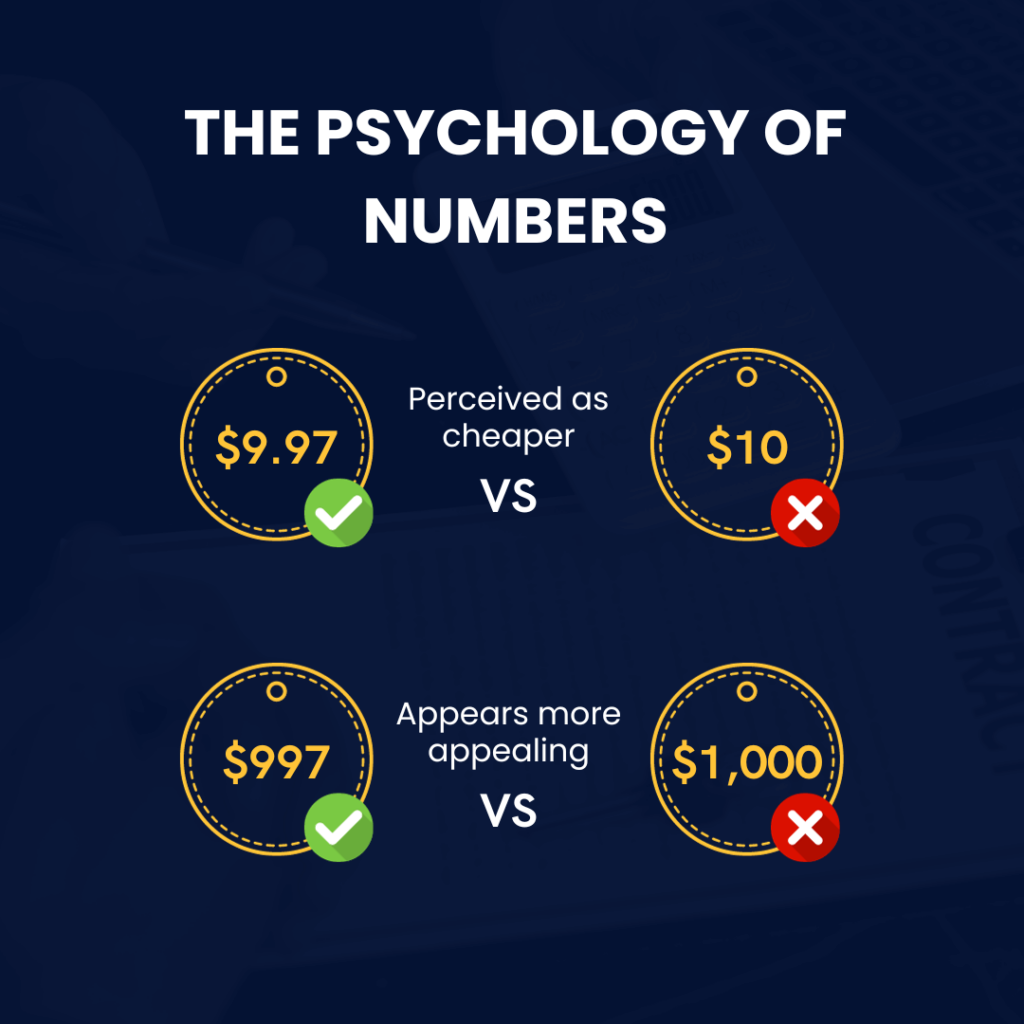
Understanding the psychology of numbers, especially the preference for odd numbers and the unique appeal of 7, can be a game-changer for your pricing strategy.
Here are some practical steps to harness the power of 7 and 9 in your pricing decisions.
First, incorporate price points that end in 7 or 9 in your product offerings. For example, consider pricing options like $47, $97, $197, $497, $997, and so on. These endings have been shown to have a positive impact on customers’ perception of value.
Second, experiment with various final numbers, especially 7 and 9. A/B tests will help you determine which price points resonate most effectively with your target audience. Keep in mind that the results may vary depending on your specific market and product.
Third, when presenting your product or service to customers, emphasize the value they will receive. Explain how your offering justifies the price, regardless of whether it ends in 7, 9, or another digit. Customers are more likely to make a purchase when they perceive a clear benefit.
Fourth, Bundle products or services in groups of three or five, using odd numbers. This approach not only aligns with the preference for odd numbers but also simplifies the decision-making process for customers.
Regardless of your pricing strategy, transparency and trust are essential. Be upfront about your pricing and the value you provide. Building trust with customers is crucial for long-term success.
Why We Love 7s
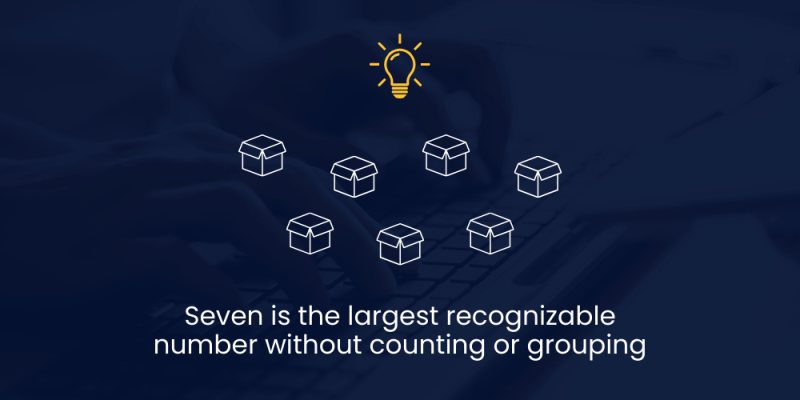
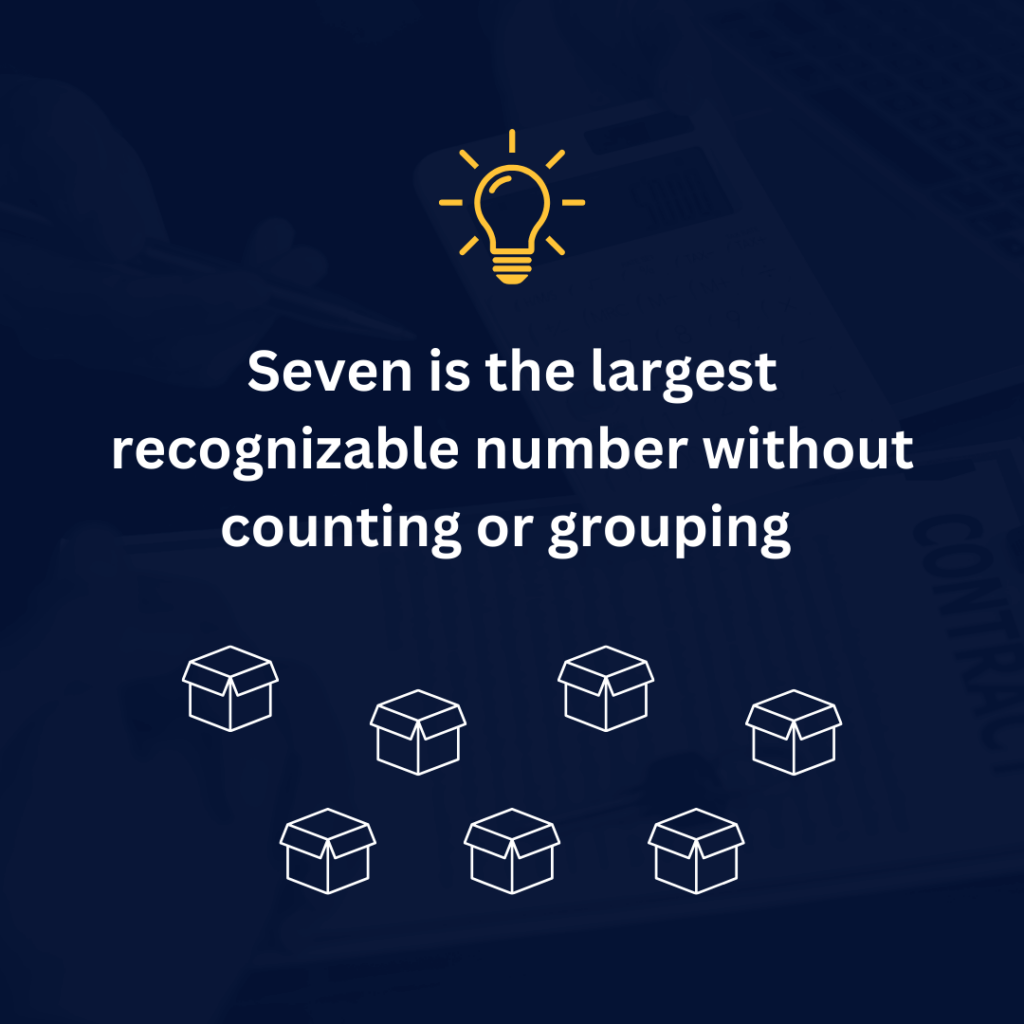
The number 7 is often associated with luck and positivity.
Even in popular culture, the allure of 7 is evident. James Bond, i.e. “007,” anyone?
According to an NPR interview with Professor Keith Devlin from Stanford’s Center for the Study of Language and Information, seven is the largest number of objects that people can recognize without counting or grouping them.
Beyond seven, our brains tend to require some form of counting or other grouping. This unique cognitive limit makes the number 7 stand out in our minds.
When people are asked to choose a number between 1 and 10 at random, a significant majority tend to select 7.
This preference for 7 in random selection suggests that it holds a special place in our subconscious.
Pricing Strategies to Win Customers
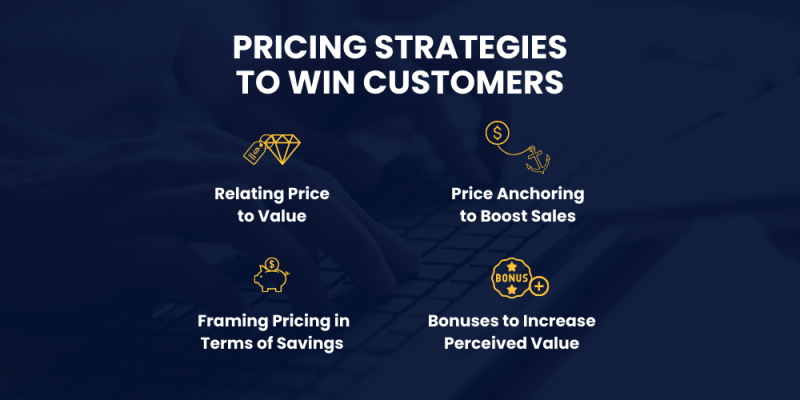
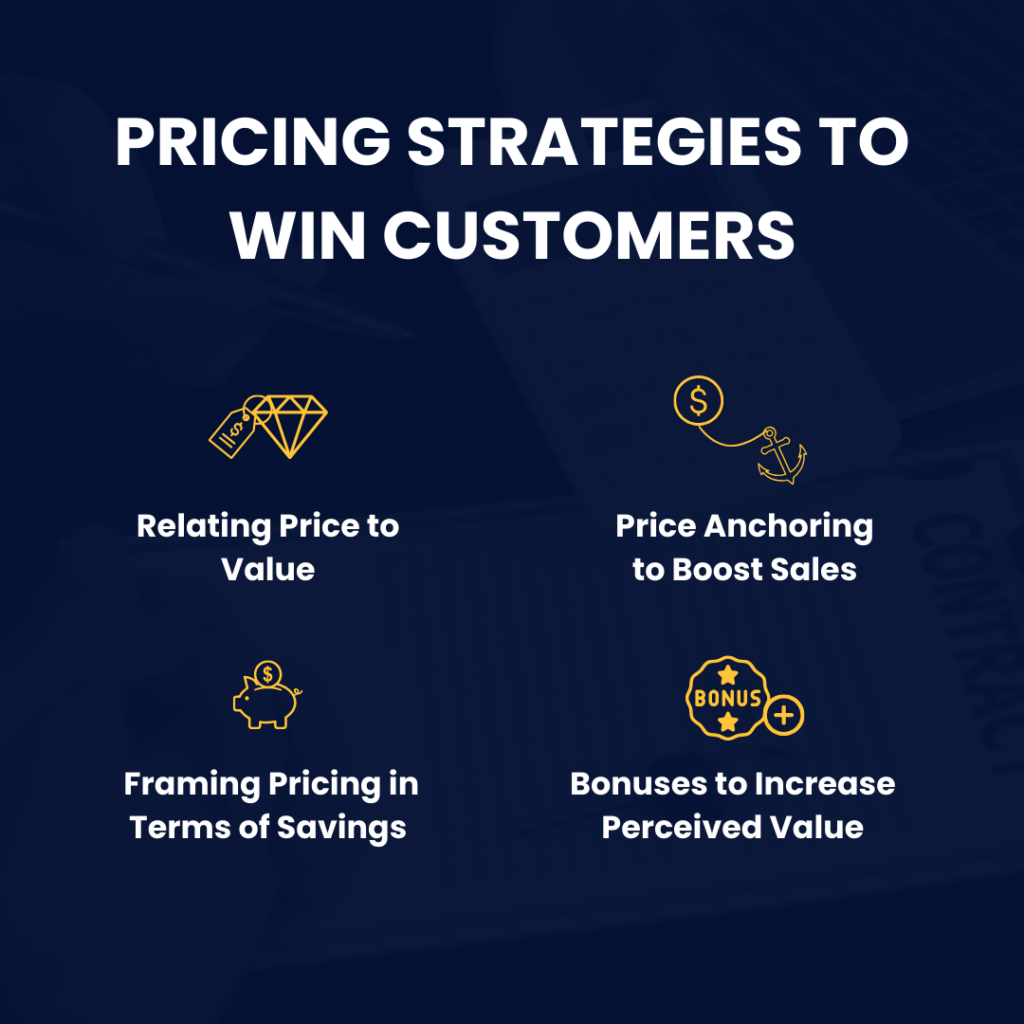
Pricing is a critical component of consumer decision-making. When potential customers evaluate a product or service, they consider various factors, including its features, quality, and, of course, the price.
The price of a product can obviously influence whether a customer chooses to make a purchase, but not necessarily in the way you think it does.
It’s not always about higher versus lower. That’s where incorporating the principles of psychology and human cognition into your pricing strategy can help you appeal to customers’ subconscious preferences. And potentially profit more while doing so.
Here are some key insights into the role of pricing in consumer decision-making:
The Relation of Price and Value
Customers often assess the value of a product or service in relation to its price. If they perceive that the value exceeds the cost, they are more likely to make a purchase.
This perception of value is influenced by factors such as features, quality, brand reputation, and, yes, the ending digits of the price.
Consumers frequently compare the prices of similar products or services before making a decision.
They seek to understand whether a product offers a competitive price compared to alternatives in the market. Here, odd-numbered prices can stand out and signal a better deal.
Price Anchoring
Pricing can serve as a psychological anchor, influencing customers’ reference points for what constitutes a reasonable price.
For example, a product priced at $497 may anchor a customer’s perception of value, making a $997 product from the same brand seem more expensive by comparison.
HubSpot emphasizes that price anchoring is not just a random technique; it’s a powerful tool that leverages buyers’ implicit biases and tendencies.
When executed correctly, price anchoring can effectively guide customers toward making purchasing decisions, ultimately boosting your sales.
Framing Prices in Terms of Savings
We’re wired to avoid losses. When pricing a product, consider framing the offer in a way that highlights potential savings or benefits.
For instance, “Save $50 on this $249 product” may be more compelling than simply stating the price as $199.
Bonuses and Higher Perceived Value
To command a higher price for your offer, add bonuses!
Bonuses can tip browsers over the edge to becoming buyers by ramping up the perceived value of your offer.
What’s more appealing, a 10-hour Udemy course on how to run Facebook ads or a course that includes video training, access to a community, weekly group coaching, proprietary frameworks, and tested swipe files?
Bonuses can make or break your pricing strategy.
Data-Driven Pricing
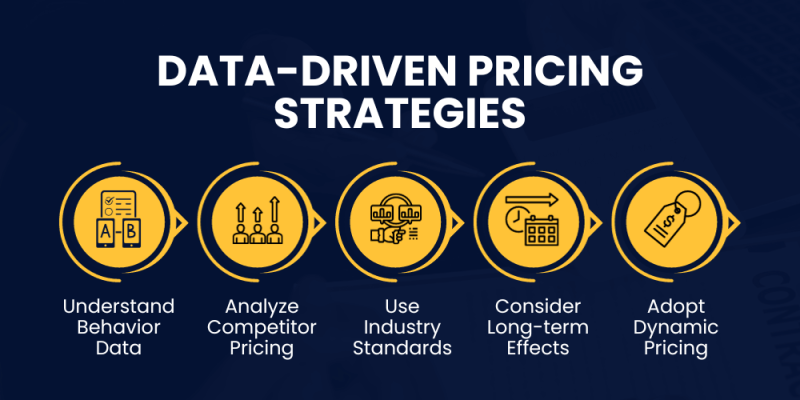
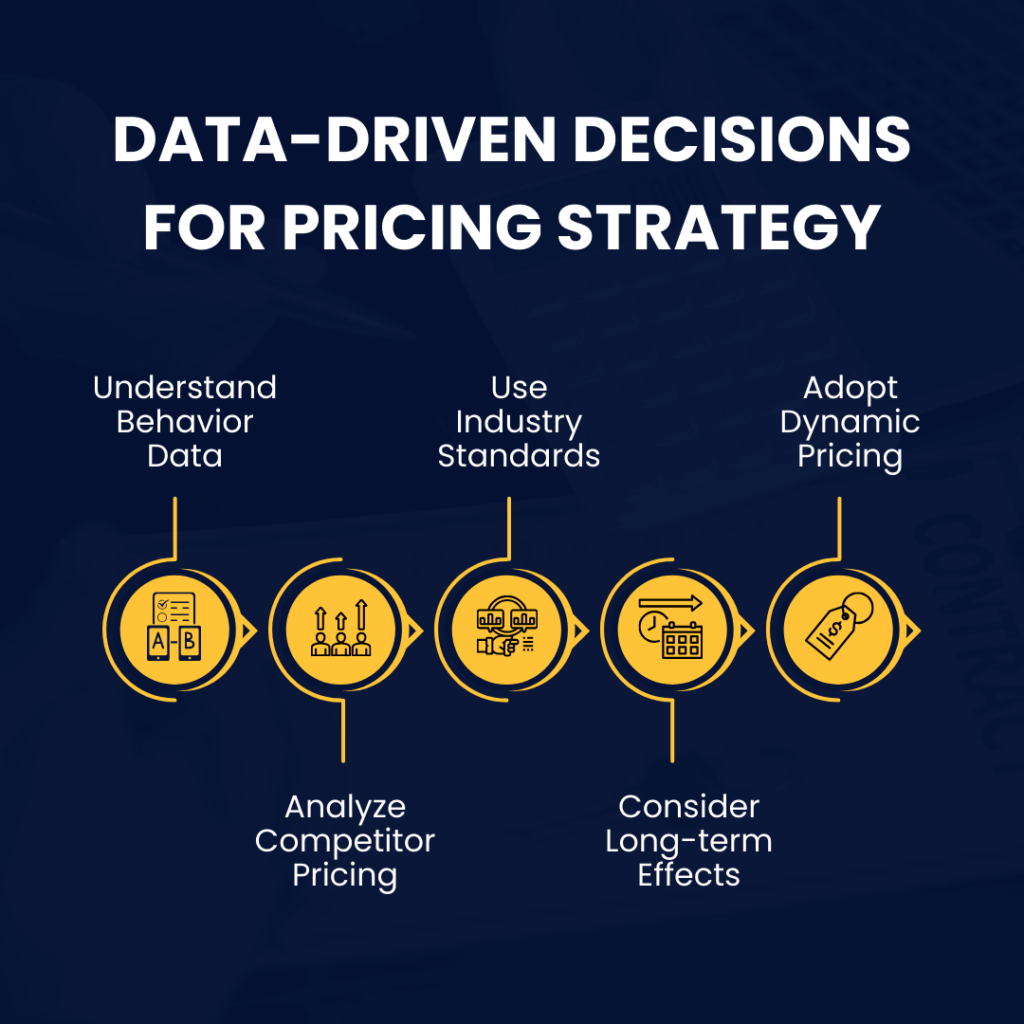
In the era of data analytics and digital marketing, you have unprecedented access to customer preferences and the ability to conduct pricing experiments.
Here are some ways to generate the best insights for your pricing strategy:
- Use A/B testing to compare the performance of different pricing strategies in real-time.
- Segment your audience and tailor pricing experiments to align with your audience’s behavior.
- Use your customer’s browsing patterns, cart abandonment rates, and conversion rates at different price points to present irresistible offers at irresistible price points.
- Monitor your competitors’ pricing strategies. Are they using odd numbers, bundling, or other tactics? How does your pricing compare?
- Benchmark your pricing against industry standards.
- Consider the long-term effects of your pricing decisions. Short-term price reductions may boost sales temporarily, but they can also erode brand value if not managed carefully.
- In some industries, dynamic pricing strategies that adjust prices based on real-time demand and supply factors can be highly effective. Evaluate whether dynamic pricing is suitable for your business.
Using all available data points to pinpoint the right pricing strategies for your offer can yield impressive results.
Ethical Pricing Considerations
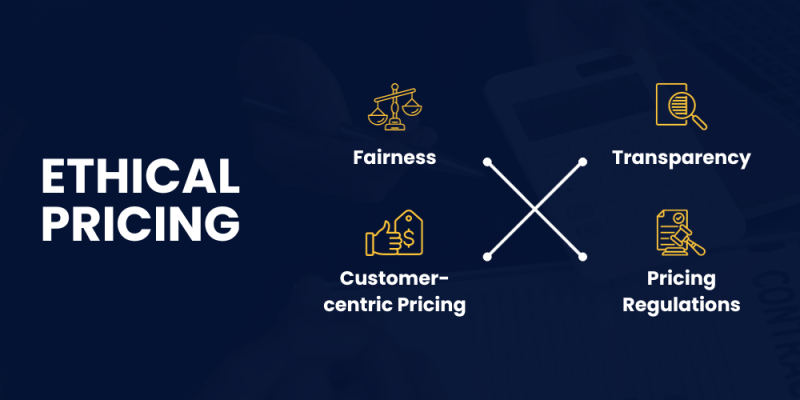
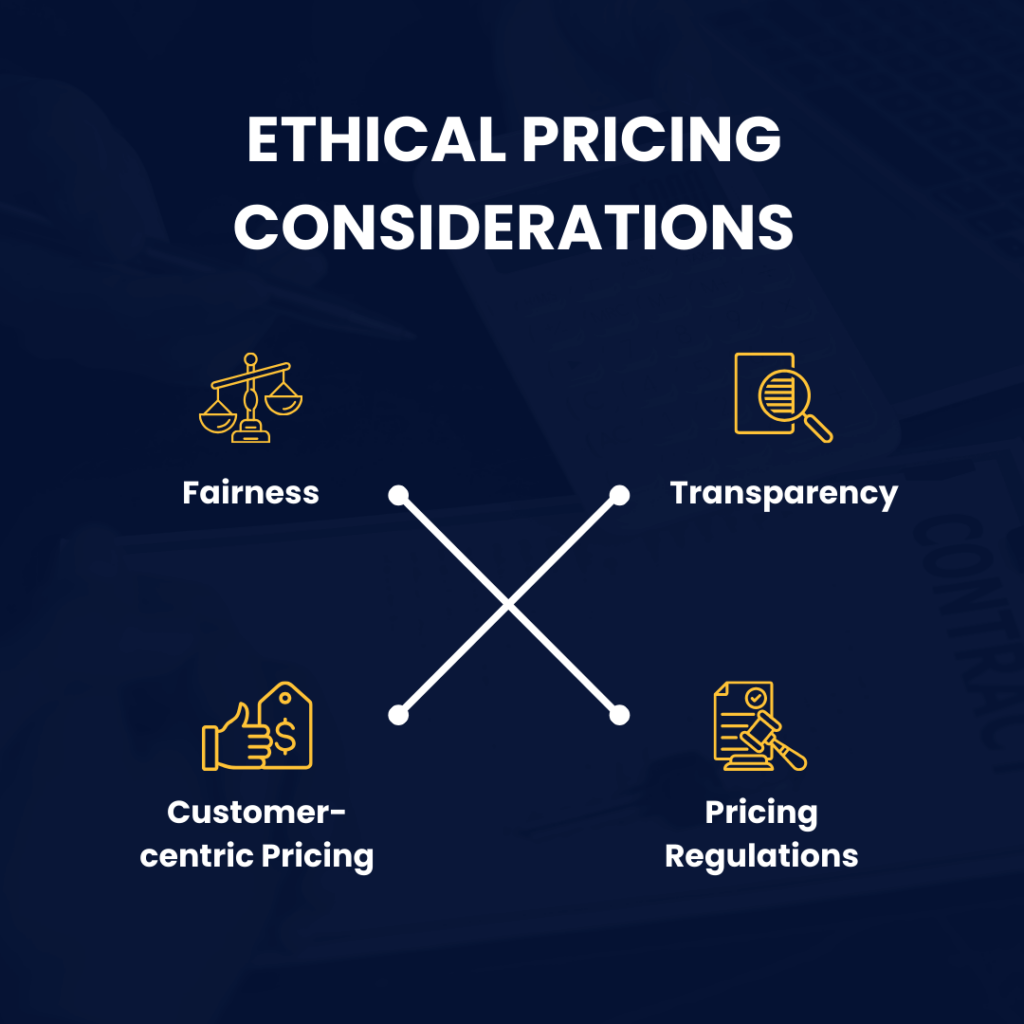
While pricing strategies rooted in psychology and consumer behavior can be powerful, they also come with ethical considerations.
It’s essential to strike a balance between optimizing prices for business success and ensuring fairness and transparency for your customers.
Here are some ethical guidelines to keep in mind:
- Be transparent about your pricing. Avoid hidden fees or sudden price hikes that surprise customers. Clearly communicate the value they will receive for the price they pay.
- Ensure that your pricing is fair and does not take advantage of vulnerable or unsuspecting customers. Avoid manipulative tactics that exploit psychological vulnerabilities.
- Prioritize delivering real value to your customers. Your pricing should reflect the quality, features, and benefits of your products or services.
- Familiarize yourself with pricing regulations and laws in your industry and region. Non-compliance can lead to legal issues and damage your brand’s reputation.
Ethical pricing may result in a short-term loss of sales but will ultimately position your brand for greater success.
Jonathan Montoya's Pricing Success: A Case Study
To illustrate the power of psychology in pricing, let’s a explore real-world case study.
Jonathan Montoya, a successful entrepreneur who specializes in helping people start home-based businesses, harnesses the power of 7s in his pricing strategy.
He’s created a low-ticket funnel that generates over $500,000 a month from a $7 product.
Yes, you read that right – $7!
Jonathan’s product, the Three-Day Business Breakthrough Challenge, helps anyone launch an online business with affiliate marketing.
What makes this story even more interesting is the way he structures his pricing. He charges just seven bucks for the challenge!
Jonathan’s use of 7 in his pricing strategy is not just a random choice, it’s a strategic move.
By using sevens in his prices, Jonathan creates what we call a contrast effect. This makes his products appear not only more valuable but also incredibly affordable when compared to other options on the market.
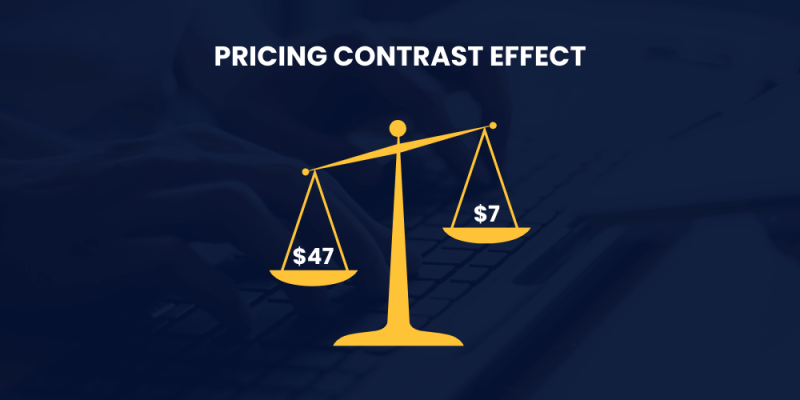
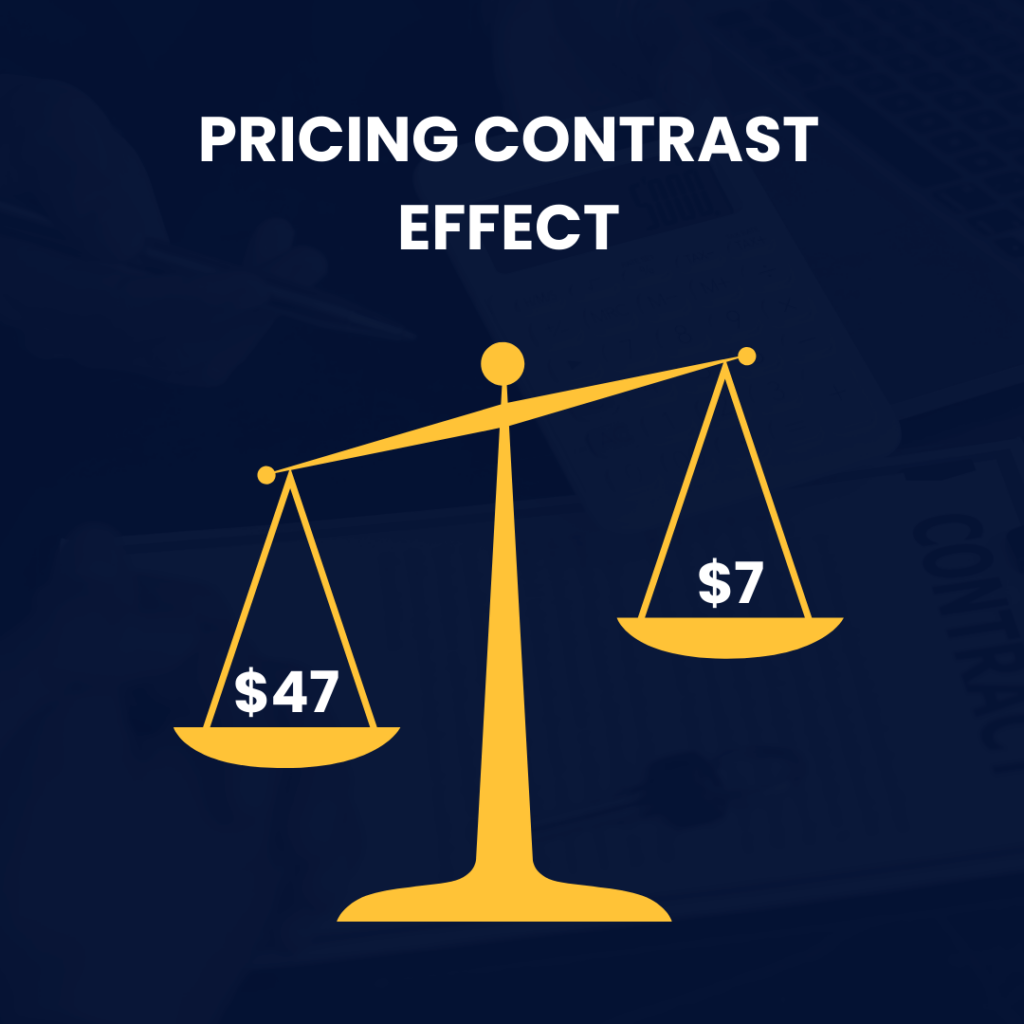
It’s a subtle yet powerful psychological trick that sets him apart from competitors who use different numbers in their prices.
Jonathan’s pricing strategy has propelled him to sell approximately 27,000 copies of his challenge in about a year and four months.
Impressive, right?
And here’s the kicker: most of these sales come from organic traffic. That’s a testament to the effectiveness of his approach.
Breaking Down Jonathan's Formula for Succses
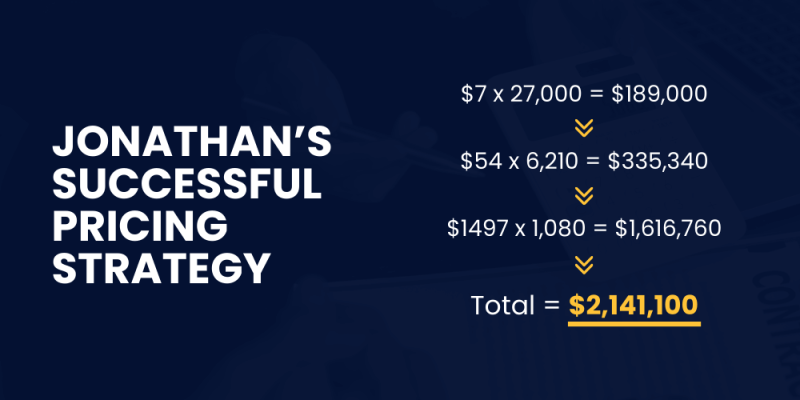
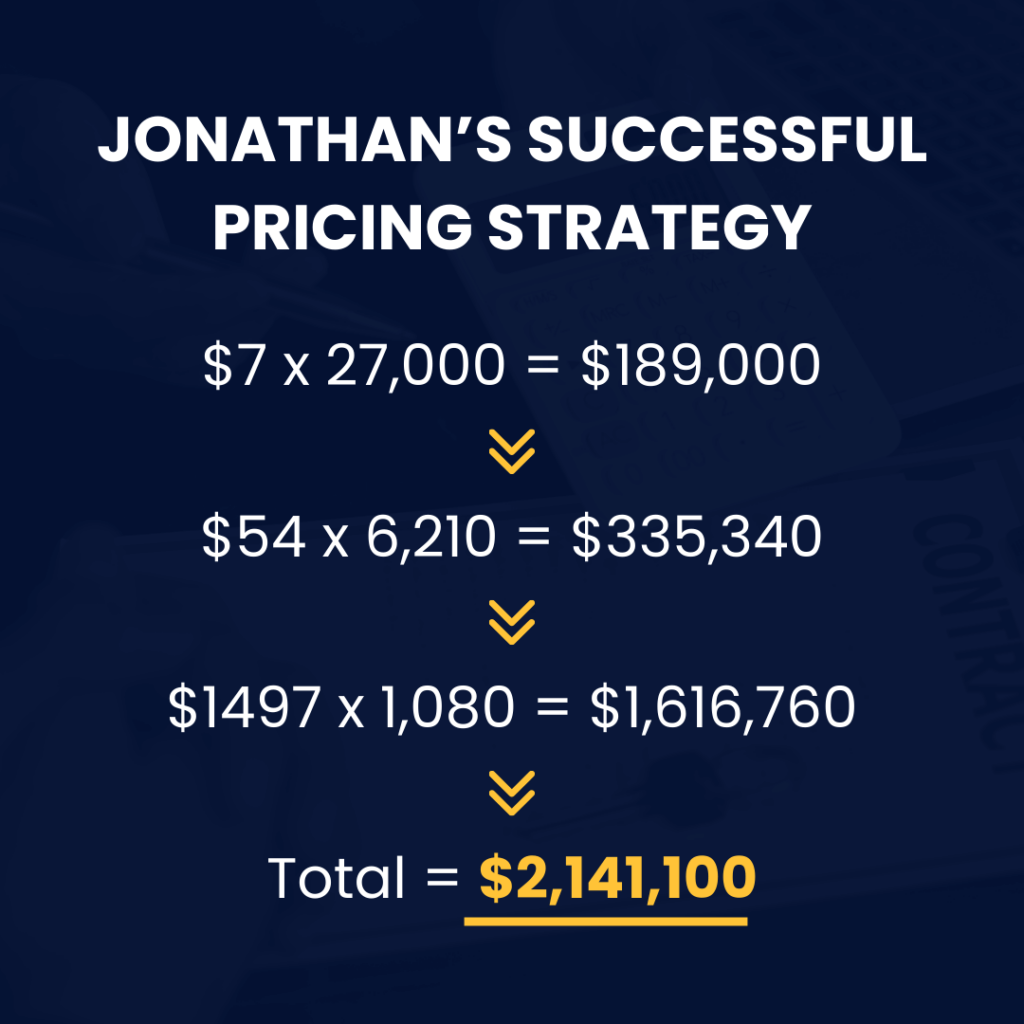
So, how does Jonathan do it? Let’s break down his success formula.
Jonathan’s $7 entry point eliminates friction, inviting a massive volume of buyers through the door.
After the initial purchase, he strategically offers upsells and order bumps to increase the average order value. For instance, a $54 order bump at a 23% conversion rate has generated roughly $335,340 in sales.
Jonathan’s $1497 main course serves as a lucrative backend offer. While only a small percentage (4%) take this offer, it’s where the big money rolls in. To the tune of approximately $1,616,760. That’s right….$1.6 million.
Additionally, Jonathan capitalizes on recurring affiliate commissions, adding a substantial income stream to his backend.
His low-priced offer is packed with value, showcasing his expertise and over-delivering before attempting any upsells.
Explore Jonathan’s strategy in more detail here or watch the video above.
The Future of Pricing
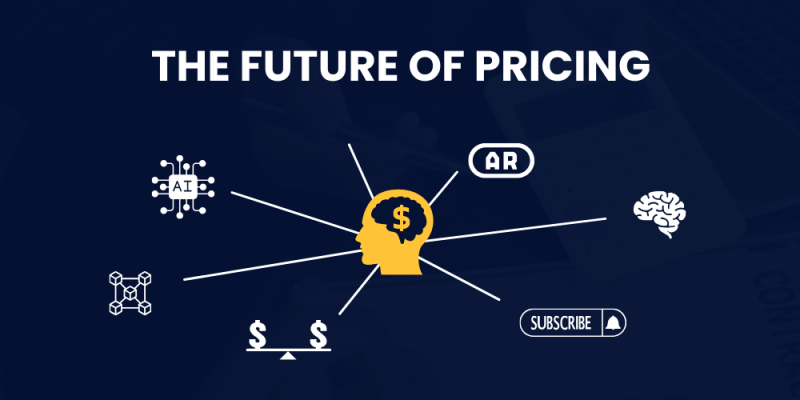
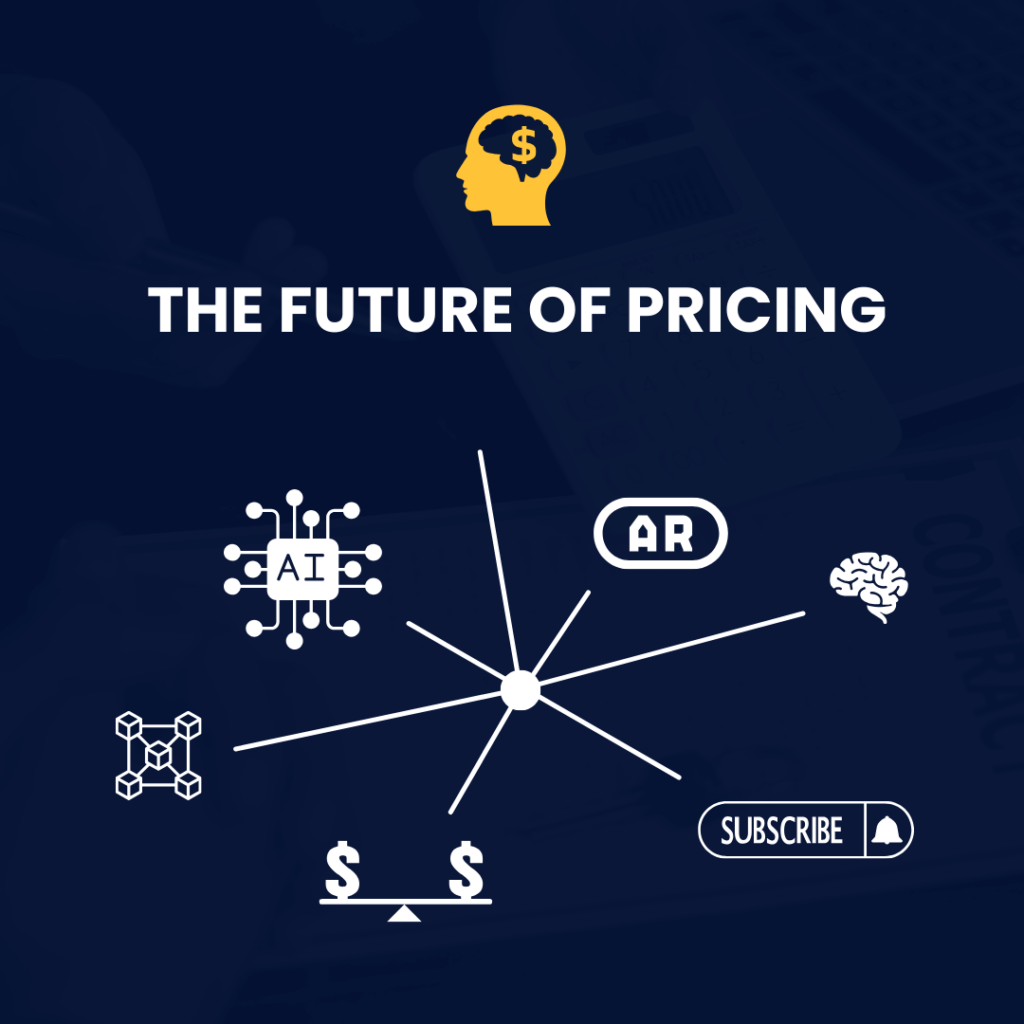
So where is pricing headed?
As technology continues to advance and consumer behavior evolves, pricing psychology will remain a dynamic field.
Advances in data analytics and AI will enable companies to tailor pricing strategies for individual customers. Personalized discounts and offers can be highly effective in driving sales.
Here’s where we foresee pricing headed:
- Advances in data analytics and AI will enable companies to tailor pricing strategies for individual customers. Expect an increase in personalized discounts and offers.
- Subscription-based pricing models are gaining popularity across various industries. These models provide a predictable revenue stream and foster customer loyalty.
- Blockchain technology can enhance transparency in pricing, allowing customers to verify the authenticity of price claims and discounts. This can build trust in online shopping.
- Fair pricing considerations will remain top-of-mind for consumers. Companies that embrace ethical pricing will resonate with socially conscious customers.
- Advanced behavioral analytics tools will provide deeper insights into customer preferences and decision-making processes. This data will inform pricing strategies.
- Augmented Reality (AR) may enable customers to visualize products, increasing perceived value.
These advances will be exciting but challenging. So developing a flexible, well-tested pricing strategy now is critical to remain agile in the coming years.
What’s Next?
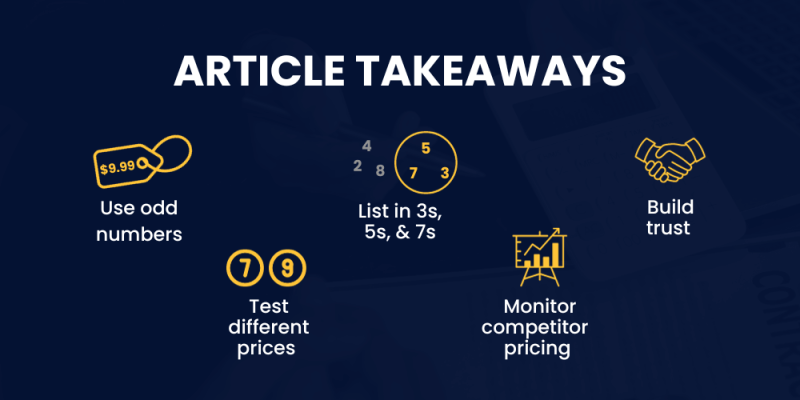
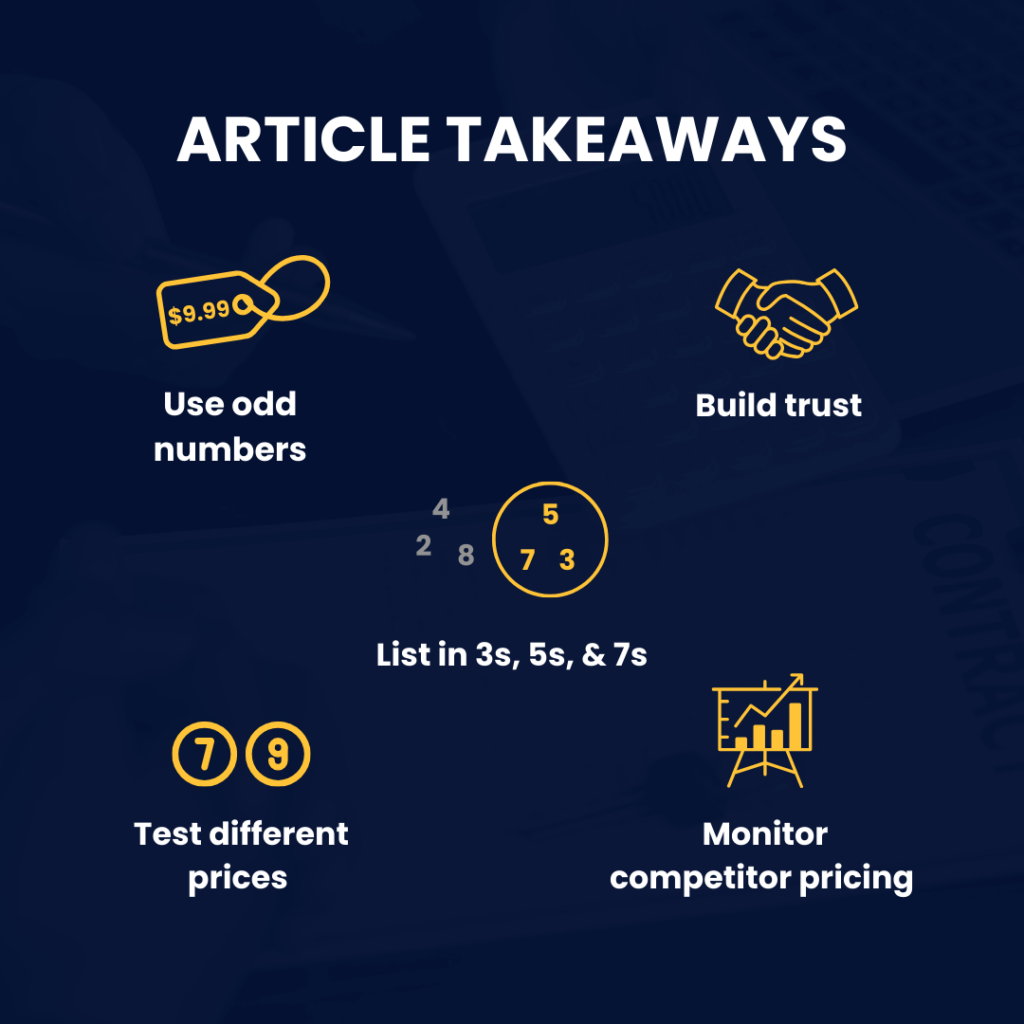
Understanding the psychology of numbers, consumer behavior, and the principles of pricing can empower you to optimize your pricing strategies for success in a competitive marketplace.
By leveraging the psychological nuances of odd numbers like 7 and 9 and staying attuned to emerging trends in pricing psychology, you can scale your business while providing immense value.
Want expert insights on pricing psychology, marketing strategies, and business growth tips? Join our exclusive Facebook group.
Here you can connect with other like-minded business owners, ask questions, and get unparalleled access to the top minds in our industry.
It’s free, it’s fun, and it’s full of amazing people who are eager to help you succeed.
Click here to join our Facebook group today.